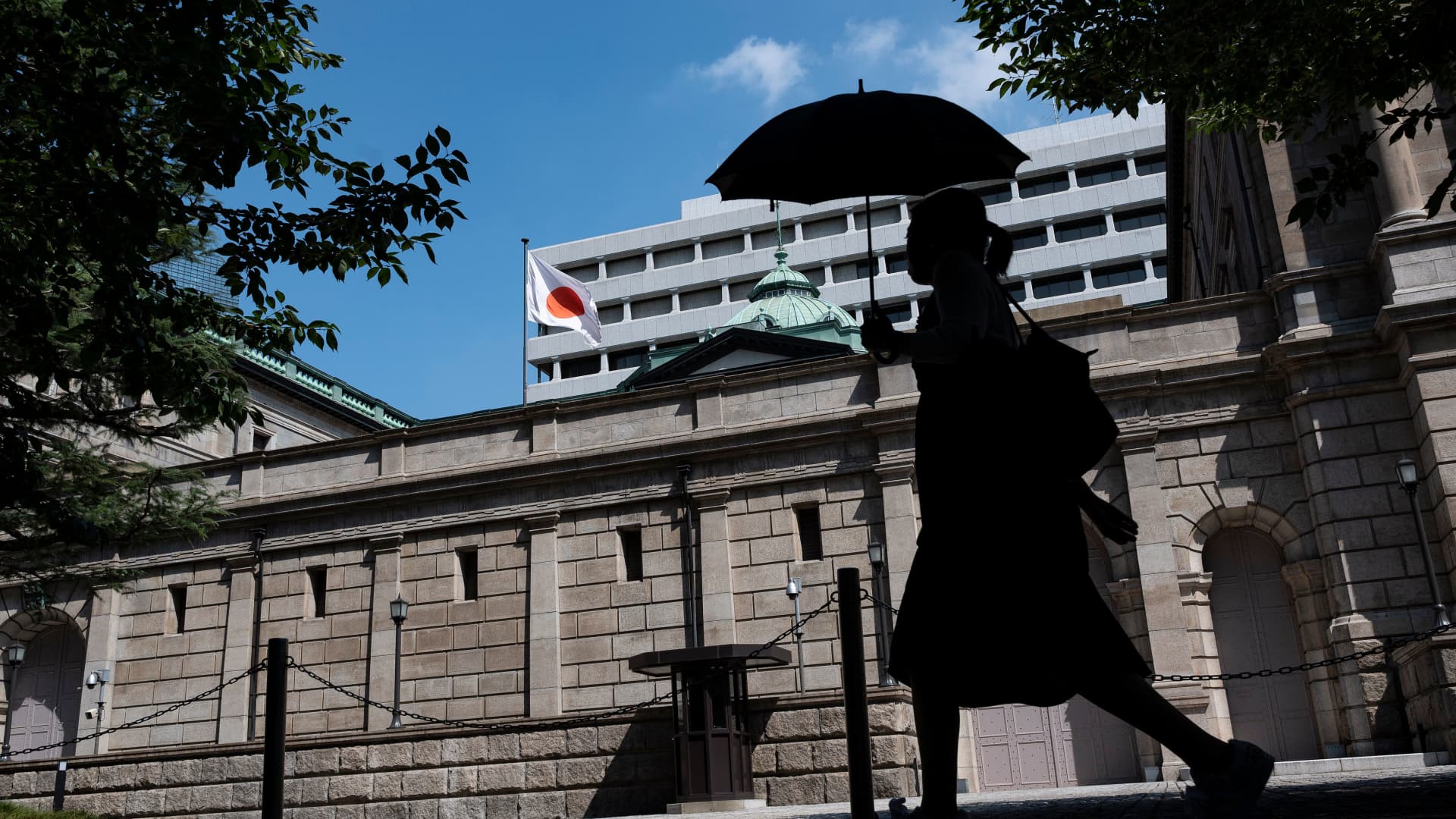The European Central Bank is expected to make yet another interest rate cut Thursday as global tariff turmoil has created widespread uncertainty and spurred fears about the euro zone's economic growth.
A rate cut is being fully anticipated by markets, with an around 94% chance of a 25-basis-point trim being priced in, according to LSEG data.
That would take the ECB's deposit facility rate, its key rate, to 2.25%. At its highs in mid-2023 it had been at 4%.
Tariff developments in recent weeks are widely seen as a key reason for the ECB to cut interest rates. Even though many of the initial duties imposed by the U.S., as well as retaliation measures, have been put on ice or eased, fears about how they could affect economic growth have been rife.
Investors will be watching out for any comments regarding tariffs in the ECB Governing Council's statement and from the central bank's President Christine Lagarde in her post-meeting press conference.
Market attention will also focus on whether the ECB tweaks its language around the restrictiveness of monetary policy, and if policymakers provide any clues around the hotly debated so-called neutral rate. That is the level at which interest rates neither stimulate nor restrict the economy, and are therefore held at.
While a rate cut is expected, "more importantly for markets will be the extent to which the central bank decides to communicate what it perceives to be the "neutral rate", and whether monetary policy could turn accommodative – i.e. go below the neutral rate – in the next six to 12 months," Julien Lafargue, chief market strategist at Barclays Private Bank, said in a note Thursday.
ECB unlikely to make big changes to the language in its policy statement, economist says

Lower growth expectations have been a key factor in shifting market pricing toward an interest rate cut from the ECB, Jens Eisenschmidt, chief Europe economist at Morgan Stanley, told CNBC on Thursday.
"Of course the clear catalyst has been here the lower growth expectation coming out of April 2nd's announcement related to the U.S. tariffs," he told Julianna Tatelbaum.
An unexpected exchange rate reaction was also a factor, he added.
"More tariffs were previously associated with a lower value of the euro, hence inflationary. The opposite has happened and of course that has contributed to an expectation for the cut."
Eisenschmidt said he does not believe the ECB would make any big changes to the wording of its closely watched policy statement as there are no new projections and a lot of uncertainty.
"Right now in that situation probably you're well advised not touching in particular references to policy being still restrictive," he said.
— Sophie Kiderlin
Markets will be looking out for hints about neutral rate, strategist suggests
An interest rate cut from the ECB is being fully priced in by markets. But the rate decision is not the only thing they will be paying attention to on Thursday.
"More importantly for markets will be the extent to which the central bank decides to communicate what it perceives to be the "neutral rate," and whether monetary policy could turn accommodative – i.e. go below the neutral rate – in the next six to 12 months," Julien Lafargue, chief market strategist at Barclays Private Bank, said in a note Thursday.
But, he added, it may be too soon for the ECB to share a solid stance on that, given the ongoing tariff uncertainty.
"Another area of focus will be the euro, given the recent appreciation of the single currency," Lafargue added. That could "help" in terms of inflation, he explained, but could be a downside risk for economic growth.
— Sophie Kiderlin
Tariffs clear the way for European Central Bank interest rate cut
The European Central Bank is widely expected to trim interest rates for the third time this year as global tariff tensions and uncertainty threaten the euro zone's economic growth.
A quarter-point cut would take the ECB's deposit facility rate, its key rate, to 2.25% — down from a high of 4% toward the middle of 2023.
The series of relatively fast-paced interest rate cuts have played out as inflation in the euro area has consistently sat below 3%, recently closing in on the ECB's 2% target. Regional economic growth has, meanwhile, been lackluster.
— Sophie Kiderlin

 2 months ago
78
2 months ago
78




























 English (US)
English (US)